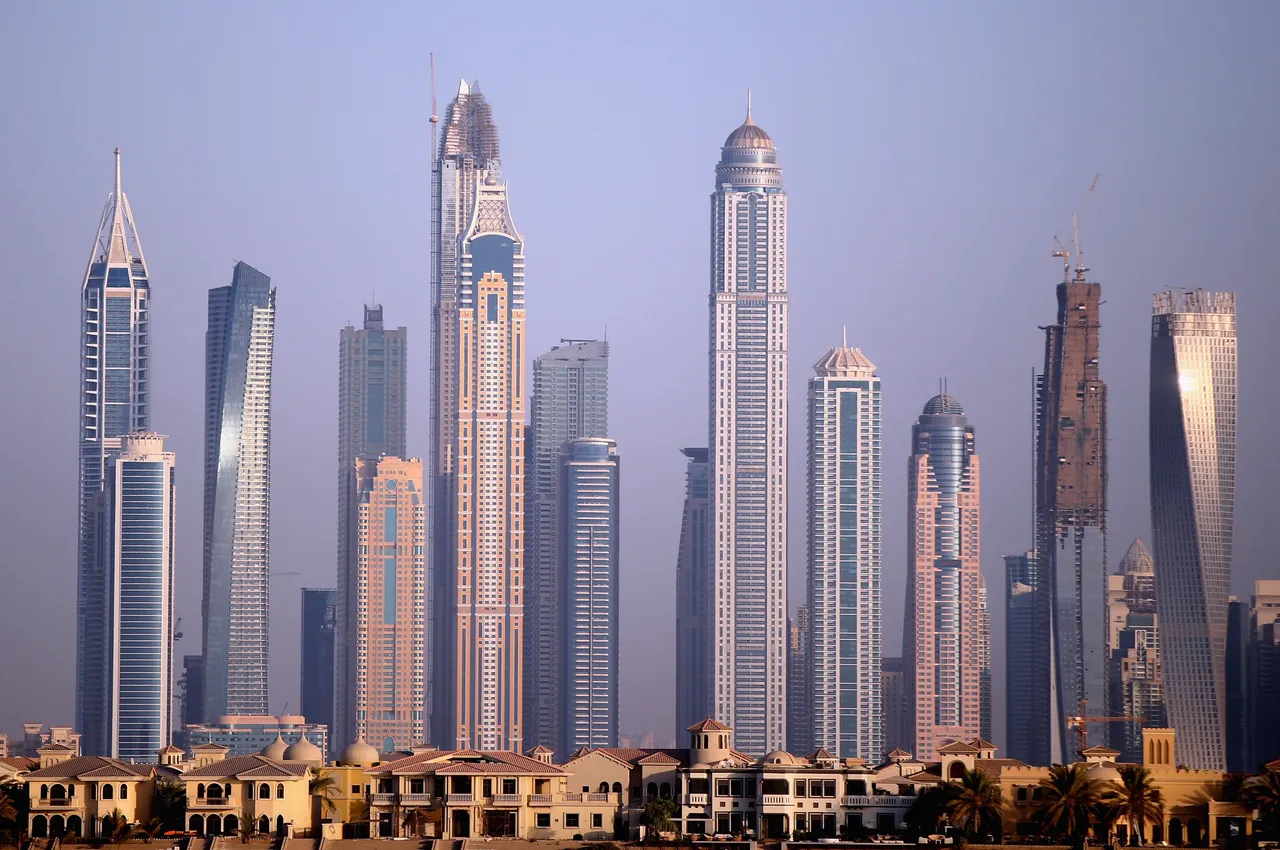
A skyscraper is a tall, continuously habitable building with multiple floors. These buildings are typically found in urban areas and serve various purposes, such as offices, hotels, residential spaces, and retail spaces. The term "skyscraper" originally applied to buildings with 10 to 20 stories, but by the late 20th century, it was used to describe high-rise buildings of unusual height, generally greater than 40 or 50 stories. Modern sources currently define skyscrapers as being at least 100 meters (330 feet) or 150 meters (490 feet) tall, although there is no universally accepted definition.
Some key features of skyscrapers include:
- Steel skeleton construction: This method of construction has allowed for the development of today's supertall skyscrapers, enabling the construction of tall multi-story buildings.
- Curtain wall: Skyscrapers often feature an outer covering of masonry or other material that bears only its own weight and is affixed to and supported by the building's structure.
- Structural components: Skyscrapers consist of a substructure of piers beneath the ground, a superstructure of columns and girders above the ground, and a curtain wall hung on the girders.
Skyscrapers have evolved over time, with advancements in construction technology and materials allowing for the creation of taller and more impressive structures. These buildings have become iconic symbols of urban development and modern architecture, often defining the skylines of major cities around the world.
Skyscrapers have become a defining feature of many modern cities, particularly in Asia and North America. They are designed to be iconic symbols of economic and cultural power, and they often house major corporations, financial institutions, and luxury residences.
The first skyscraper was the Home Insurance Building, built in Chicago in 1885. It was designed by architect William Le Baron Jenney and stood at a height of 10 stories. Since then, skyscrapers have evolved in terms of design, materials, and height, with many modern skyscrapers reaching heights of over 1,000 feet (305 meters).
Some of the tallest skyscrapers in the world include:
- Burj Khalifa, Dubai, United Arab Emirates - 2,722 feet (830 meters)
- Shanghai Tower, Shanghai, China - 2,073 feet (632 meters)
- Abraj Al-Bait Clock Tower, Mecca, Saudi Arabia - 1,972 feet (601 meters)
- Ping An Finance Center, Shenzhen, China - 1,965 feet (599 meters)
- Lotte World Tower, Seoul, South Korea - 1,821 feet (555 meters)
Skyscrapers have both advantages and disadvantages. Some of the benefits include:
Advantages:
- Efficient use of space in densely populated areas
- Provide opportunities for businesses and residents to thrive in urban areas
- Can be iconic symbols of economic and cultural power
- Can offer panoramic views of the city
Disadvantages:
- Can be expensive to build and maintain
- May create traffic and pedestrian congestion in surrounding areas
- Can cast shadows and create wind tunnels in surrounding areas
- May have negative impacts on local ecosystems and wildlife habitats
Overall, skyscrapers are a defining feature of modern cities and represent human innovation and progress in architecture and engineering.
History of Skyscrapers
The history of skyscrapers dates back to the late 19th century, when cities began to grow rapidly and there was a need for larger, more efficient buildings.
Here is a brief overview of the history of skyscrapers:
- Early beginnings: The first skyscraper was the Home Insurance Building, built in Chicago in 1885. It was designed by architect William Le Baron Jenney and stood at a height of 10 stories. The building was constructed using a steel frame, which allowed for greater height and stability than traditional brick and mortar buildings.
- The steel frame revolution: The use of steel frames in skyscrapers became more widespread in the late 19th and early 20th centuries. The Flatiron Building in New York City, built in 1902, is a famous example of a steel-framed skyscraper. The steel frame allowed for taller buildings, and the use of elevators made it possible for people to easily access the upper floors.
- The Art Deco era: During the 1920s and 1930s, skyscrapers began to be built in the Art Deco style, with ornate details and geometric shapes. The Chrysler Building and the Empire State Building in City are examples of Art Deco skyscrapers.
- The post-war boom: After World War II, there was a building boom in cities around the world. Skyscrapers began to be built using new materials and techniques, such as reinforced concrete and glass curtain walls. The Seagram Building in New York City, built in 1958, is a famous example of a post-war skyscraper.
- The supertall era: In the late 20th and early 21st centuries, skyscrapers began to be built that were even taller than before. The Petronas Twin Towers in Kuala Lumpur, Malaysia, built in 1998, were the first buildings to exceed 1,000 feet (305 meters) in height. The Burj Khalifa in Dubai, built in 2010, is currently the tallest building in the world, standing at 2,722 feet (830 meters).
- Modern skyscrapers: Today, skyscrapers continue to be built using cutting-edge materials and techniques. Many modern skyscrapers are designed to be energy-efficient and sustainable, with features such as green roofs, rainwater harvesting systems, and solar panels. The Shanghai Tower in China, completed in 2015, is an example of a modern skyscraper that incorporates sustainable design principles.
